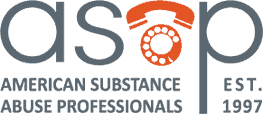By: ASAP
The lack of drivers has delivered a blow to the nation’s supply chain and economy. However, there are thousands of drivers ready to go back to work if given a second chance. In the face of this reality, employers are rethinking about giving employees another opportunity for both Department of Transportation (DOT) and non-DOT drivers because this allows them to retain the value of a skilled employee. This shift in perception and purpose of a second chance program drives the motivation for employees to continue to stay on course after completing the DOT Return to Duty process or another program in the case of non-DOT. This can change the trajectory for safety sensitive workers and employers working to turn around the nation’s need for those that deliver the nation’s supplies.
DOT Second Chance Policy
Companies with DOT employees are required to have a DOT drug and alcohol testing policy that maintains the guidance for a drug free workplace. Including a second chance program within the policy decreases workplace accidents, reduces workers’ compensation claims, guards against liability exposure, and improves employee morale. As part of this process, the Designated Employee Representative (DER) is the first line of defense for enforcing the policy and holding an employee responsible when in violation. In 2021, according to ASAP statistics, an increase of 22% of DERs were involved in helping DOT employees get a second chance at their employment. This means more drivers on the road faster by supporting employees’ productivity.
Non-DOT Last Chance Policy
For non-DOT companies, the value of retaining a driver after a positive drug test saves on costs of recruiting and hiring by reducing the turnover rate. For the employee, there is value to them to stay clean and maintain their flow of revenue. In 2021, the industry saw an increase of 35% of companies that were involved with employees and willing to give them a last chance. This statistic shows that companies are finding value in trying to help their employees stay on course after testing positive for drugs and alcohol, saving time and money while keeping drivers on the road.
Self-Referrals and Management Referrals
Another aspect of helping employees retain their employment is a self-referral or management referral program. This type of program allows employers to be proactive before an accident occurs by reacting to the signs and symptoms of potential drug abuse or alcohol use. In 2021, the industry saw an increase of 22% and 21% respectively among non-DOT employers. Although the employee may still be subject to disciplinary action, there is a financial benefit to the employer of retaining that employee and providing the employee an opportunity to retain their employment and financial viability as well as receiving the help they need.
ASAP provides Second Chance Programs for DOT and Non-DOT employers with the same nationwide evaluation, case management and testing monitoring services that federally-regulated employers rely upon to return employees safely to work. ASAP programs work with the SAP Providers to enhance the CM process and maintain employee accountability with a success rate of 85% for individuals who successfully complete the program and return to work safely. For assistance with maintaining your drug-free workplace, call 410-366-3899 x607 to speak to an ASAP Advisor today. #WorkSafely


